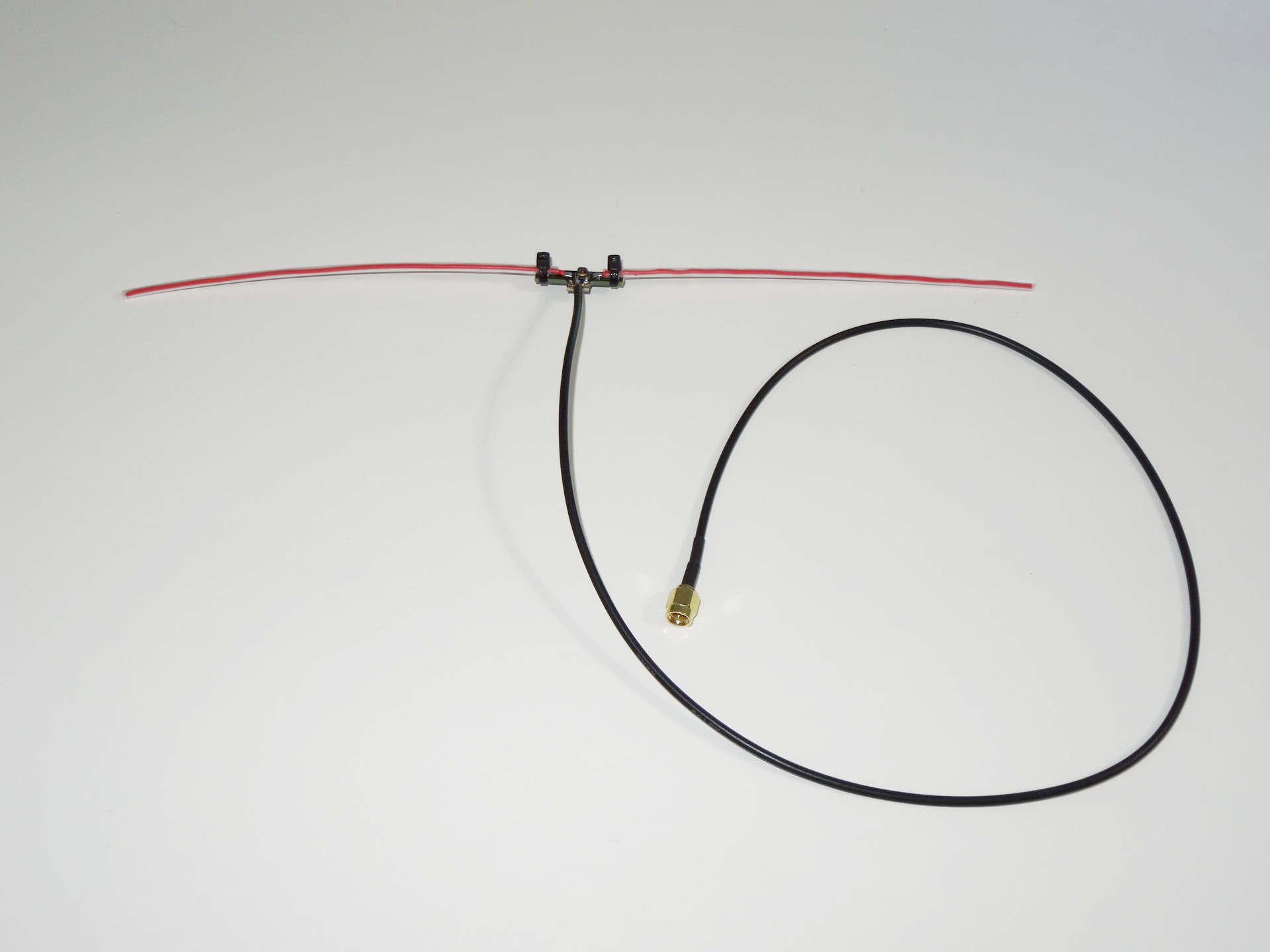
DRAGON LINK RECEIVER ANTENNAS
THIS IS A VERY IMPORTANT STEP, and will determine the performance, and range of your RC control and telemetry. Please take the time to read below and look at the pictures for recommended mounting.
These instructions apply to all versions of Dragon Link Receiver antennas, regardless of size, version, or coax length.
1. The top element wire MUST ALWAYS BE MOUNTED VERTICAL. This is the most important rule that you should never change.
3. You should NEVER have both wire antenna elements parallel to each other, this will result in an RF short, and absolutely horrible performance.
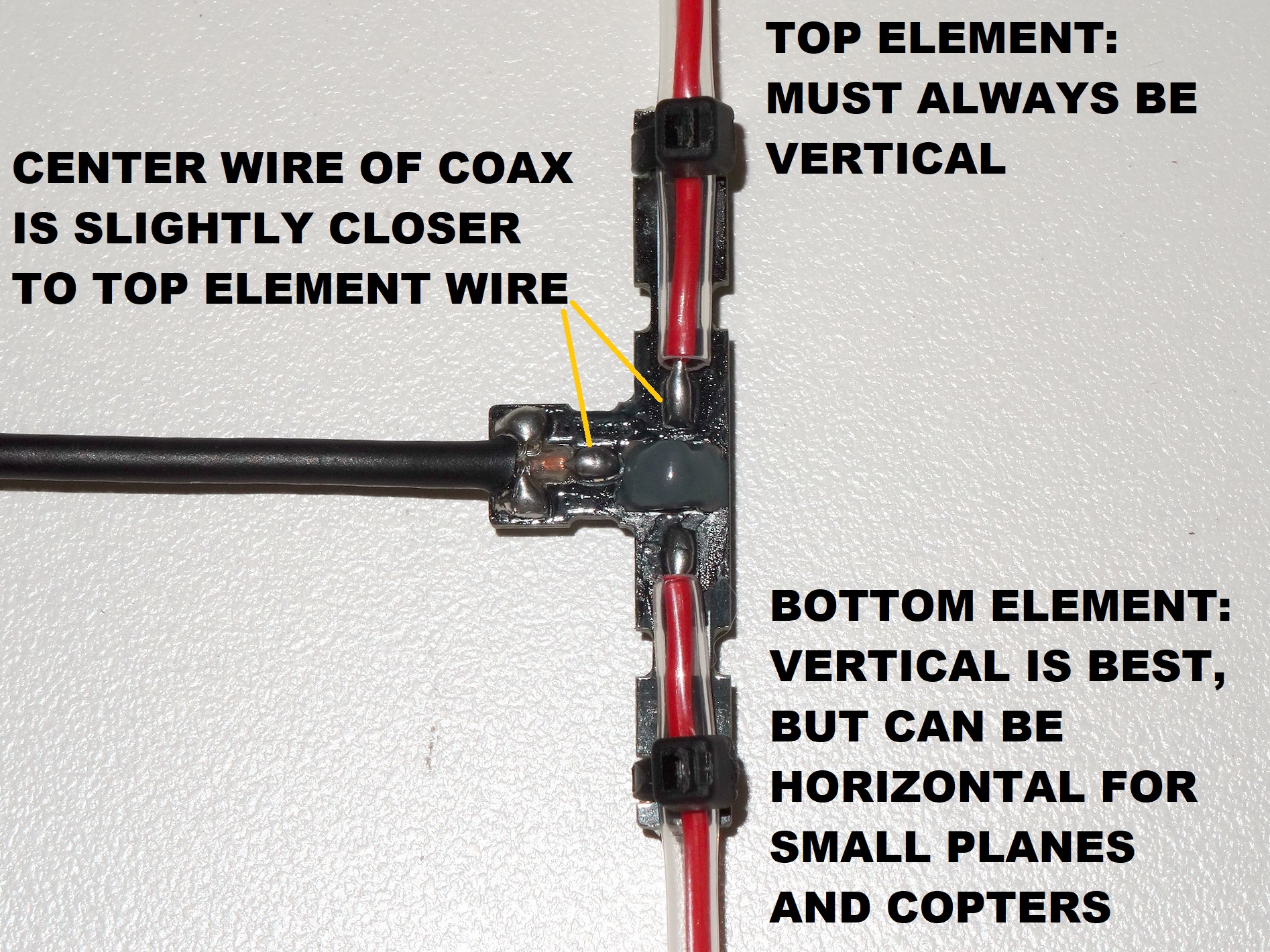
See picture to left to identify the TOP and BOTTOM element wires.
The TOP wire connects to the CENTER portion of the coax.
The BOTTOM WIRE connects to the GROUND of the coax.
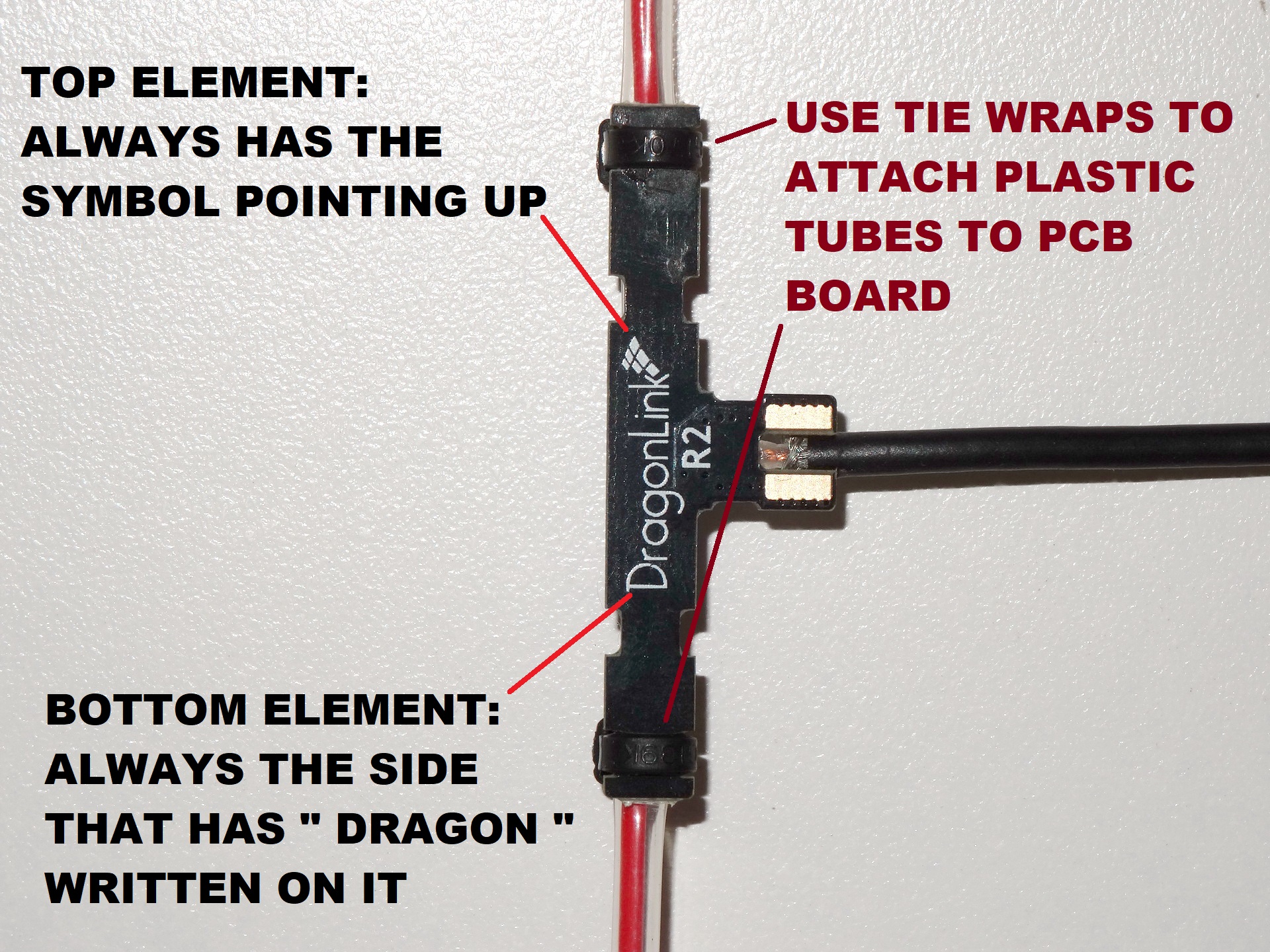
BACK SIDE OF ANTENNA PCB
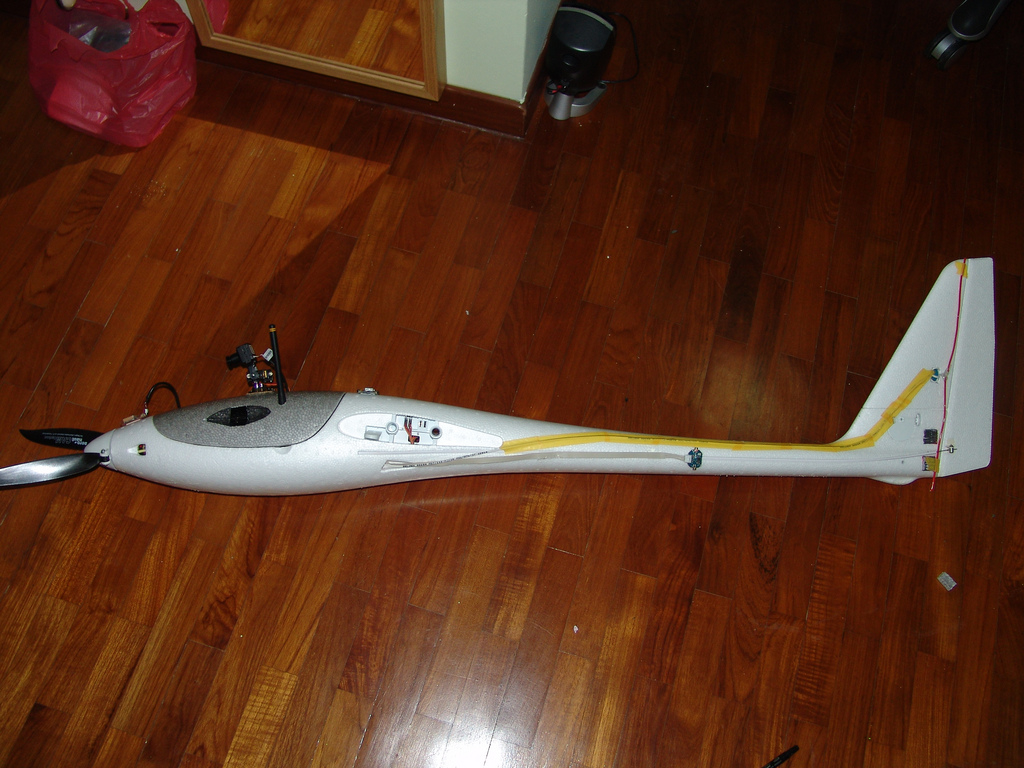
TYPICAL PLANE:
Antenna is mounted in the tail, both elements vertical for maximum range.
Antenna is far away from Video Transmitter and Video Camera
Antenna is out of the way, resistant to damage in transport, and on landing.
Receiver is mounted under canopy, using 36 inch antenna extension.

MEDIUM COPTER:
Antenna is mounted against carbon fiber body
Top element MUST be vertical
Bottom element is mostly vertical
Mounting against carbon fiber is OK since antenna element is perpendicular to carbon fiber body
Bottom element can be run horizontal along carbon fiber body if desired, but will result in some reduced performance
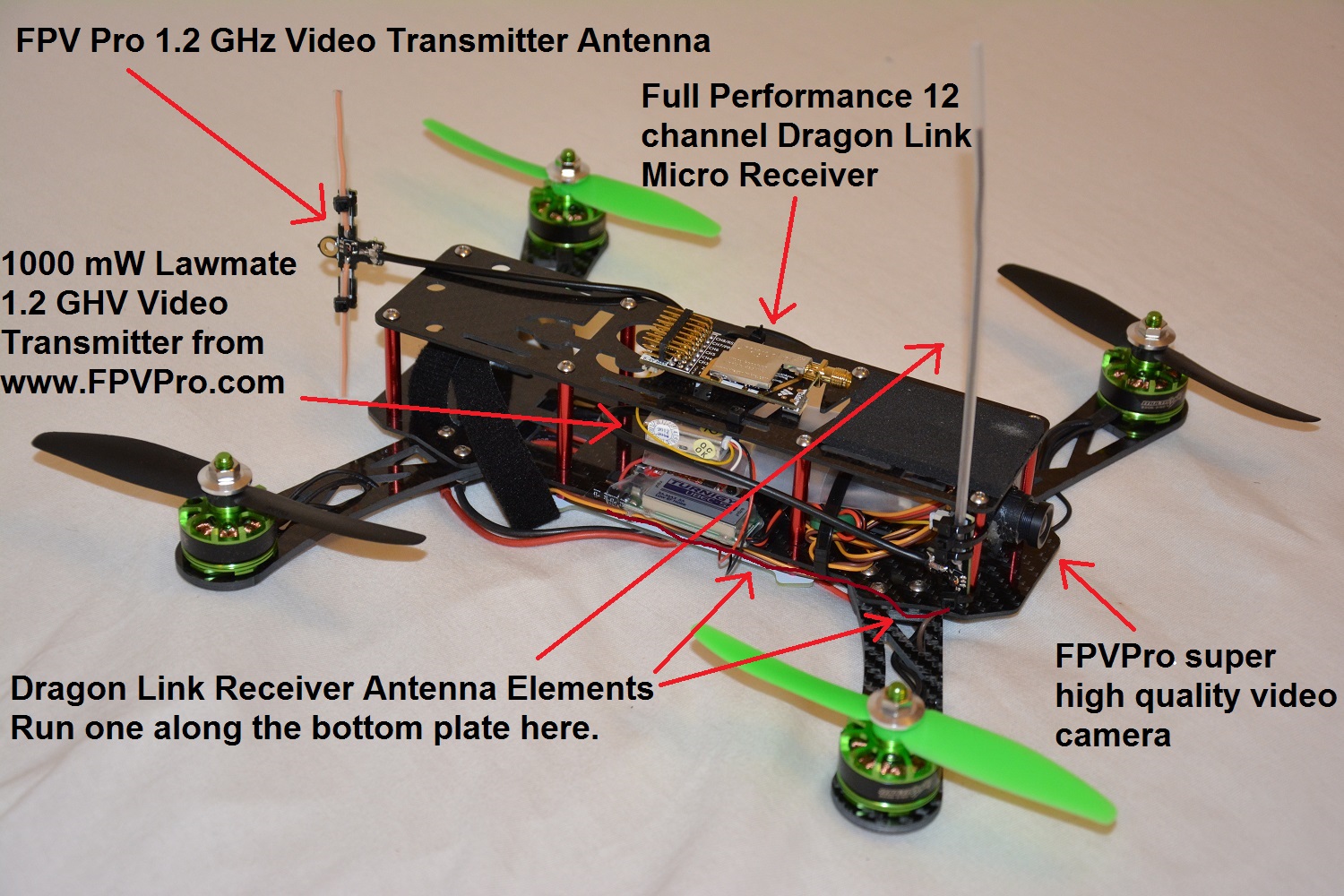
SMALL COPTER or PLANE:
Top element of antenna MUST be vertical.
Bottom element of antenna run horizontal along carbon fiber body of copter. Some reduced performance, but more than good enough for the range a small copter will fly.
Top element of antenna should NOT be next to video transmitter antenna.
Receiver can be mounted anywhere you want, against carbon fiber is OK.